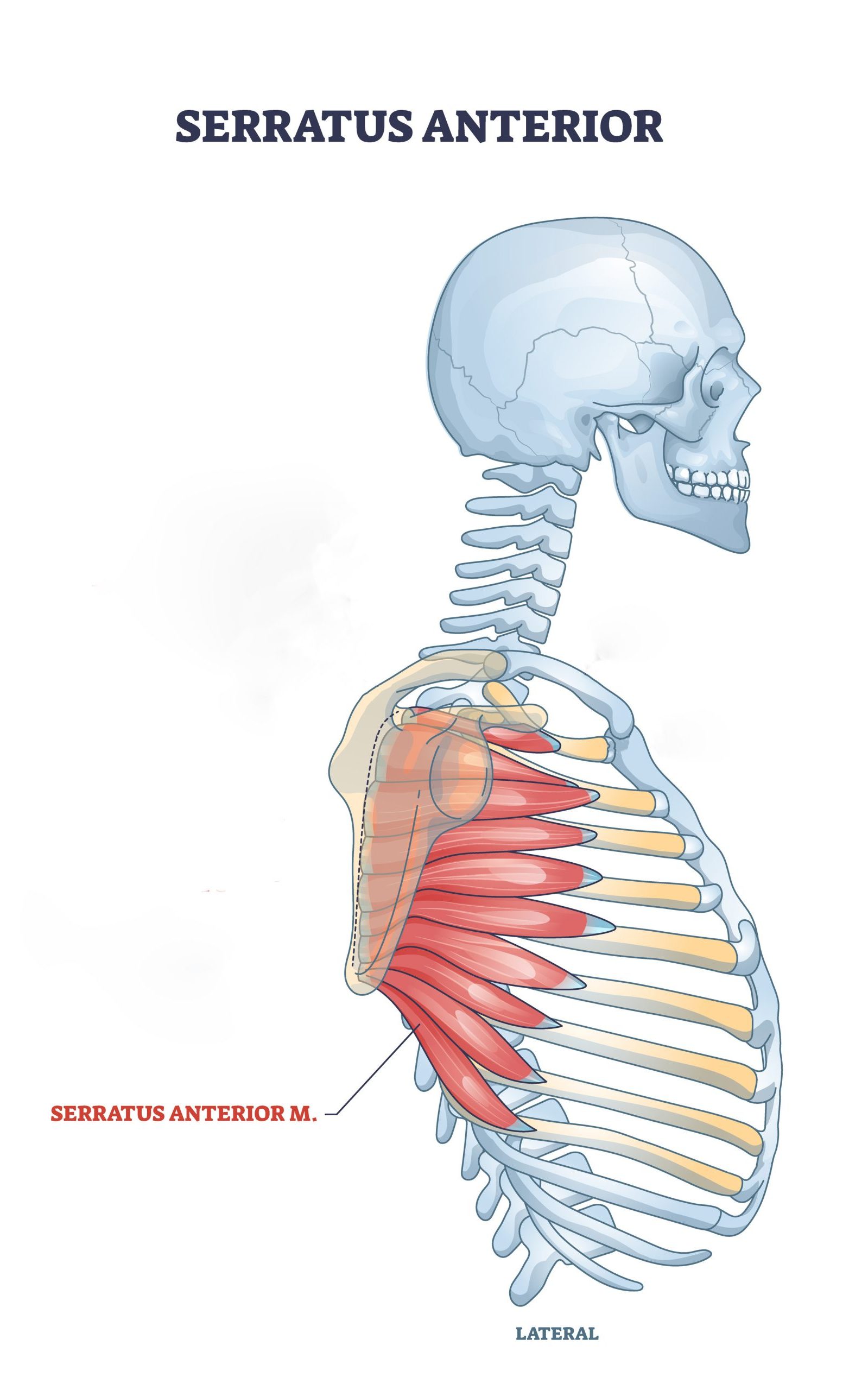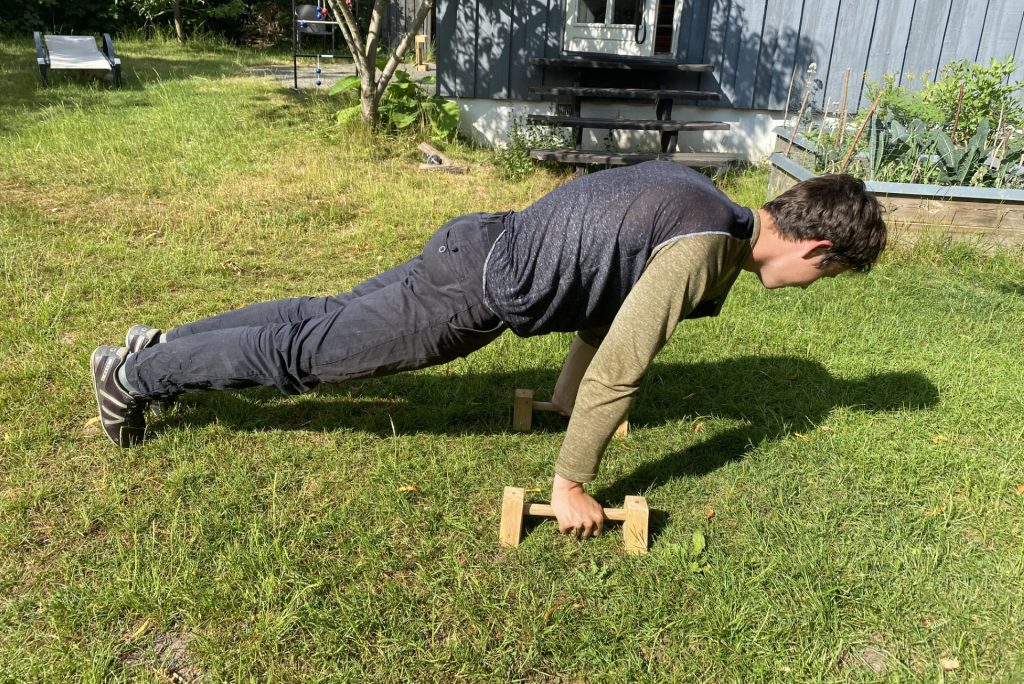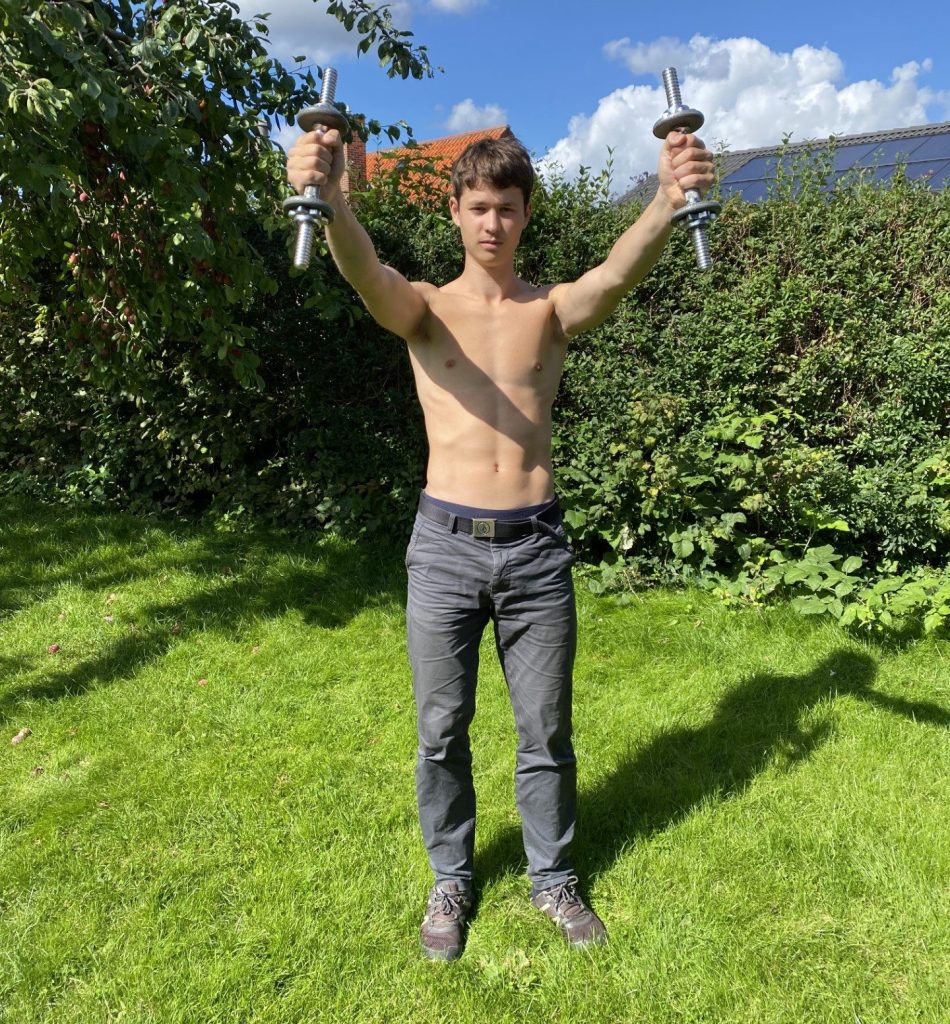The serratus anterior muscle may not be as well-known as some of the larger muscles in the body but it is vital for shoulder health, posture, and upper-body functionality. Strengthening this muscle is especially beneficial for mastering advanced calisthenics moves like planches, front levers, and handstands, which heavily rely on scapular stability and control.

Table of Contents
Serratus Anterior: The Most Overlooked Muscle of the Upper Body
Not only will training the Serratus Anterior contribute to a more balanced and defined appearance in the upper body. Maintaining proper scapular positioning and stability, also reduces the strain on surrounding muscles and structures, reducing the risk of strains, impingements, and other injuries. Weakness or dysfunction of the serratus anterior can lead to scapular winging, a condition where the medial border of the scapula protrudes away from the ribcage. This can result in improper shoulder movement patterns, pain, and an increased risk of shoulder injuries.
Anatomy and Function of the Serratus Anterior: How to isolate and train it
The serratus anterior is a muscle located on the ribcage’s lateral (outer) surface. It is named “serratus” due to its saw-toothed appearance. This muscle is crucial in scapular stability, shoulder movement, and proper posture. Here’s a closer look at its anatomy and functions:

The serratus anterior muscle originates from the upper eight ribs and inserts into the medial border of the scapula (shoulder blade) along a surface called the “costal surface.” The muscle is divided into several segments or “digitations,” resembling fingers, which give it the characteristic serrated appearance.
The serratus anterior is divided into three main parts:
- Superior Fibers: These fibers arise from the upper ribs and tend to assist in protracting the scapula and helping to elevate the arm in certain movements.
- Intermediate Fibers: These fibers originate from the middle ribs and play a role in scapular protraction and stabilization during pushing movements.
- Inferior Fibers: Arising from the lower ribs, these fibers contribute to scapular protraction and upward rotation.
Function: The primary functions of the serratus anterior muscle is:
- Scapular Protraction: The serratus anterior is a key muscle for scapular protraction, which involves pulling the shoulder blades apart and away from the spine. This movement is used when reaching forward or pushing objects away from the body. It is important in stabilizing the shoulder blades during movements like push-ups, planche, and back levers.
- Scapular Upward Rotation: During arm elevation, especially when the arms are raised overhead, the serratus anterior assists in rotating the scapula upward. This movement is important because it helps prevent the pinching of sensitive tissues between the upper arm bone and the shoulder blade.
Overall, the serratus anterior muscle is a vital component of the shoulder girdle’s functional anatomy. Its actions not only facilitate movement but also play a significant role in maintaining proper scapular position, posture, and shoulder health.
6. Best Calisthenics Exercises To Train The Serratus Anterior
Training the serratus anterior muscle involves performing exercises that emphasize scapular protraction and upward rotation, as that is the primary function of the serratus anterior. I have compiled a list of some of the best exercises you can do to target the serratus anterior:
1. Push Ups (Plus)
The first exercise on the list is the good old push-up but performed in a particular way to target the serratus anterior muscle more effectively. The Push-Up Plus, also known as the Serratus Push-Up, includes an additional protraction movement that directly targets the Serratus anterior muscle. This modification is a simple yet effective method to enhance the strength of the Serratus Anterior without the need for extra exercises. By incorporating this slight adjustment into your regular push-ups, you can effectively engage and strengthen the serratus anterior muscle.

How to perform push ups to maximize Serratus Anterior activation:
- Start in a standard push-up position with your hands slightly wider than shoulder-width apart, fingers pointing forward, and your body in a straight line from head to heels.
- Lower your body towards the ground by bending your elbows, keeping your core engaged and your hips in line with your body.
- As you push back up to the starting position, instead of stopping when your arms are fully extended, continue to push through your hands so that your shoulder blades protract (spread apart) at the top of the movement.
- After the protraction, retract your shoulder blades by slightly squeezing them together.
- Lower your body again and repeat for reps
Incorporating this simple tweak to your push-ups can be an effective way to target and strengthen the serratus anterior muscle, and also great for mastering scapula control for advanced calisthenics skills like the planche.
2. Handstand Push Up Progression
The progression of handstand push-ups, such as the pike push-up, offers an excellent way to engage the serratus anterior muscle without direct isolation. These exercises involve scapular upward rotation and protraction of the scapula, this action is primarily enabled by the serratus anterior muscle. The serratus anterior connects the scapulae to the ribcage and aids in controlling their movement.

How to perform push ups like a pike:
- Begin in a downward dog yoga pose with your hands and feet on the ground, forming an inverted “V” shape. Your hands should be slightly wider than shoulder-width apart, and your feet should be hip-width apart.
- Bend your elbows and lower your head towards the ground. Keep your core engaged and your body in a straight line from head to heels.
- Push your body back up by extending your elbows. Focus on pushing through your hands while maintaining the pike position.
To target the serratus anterior effectively use full ROM and avoid squeezing the shoulder blades together instead let the scapula rotate upwards freely until your scapula ends up in an elevated position.
3. Roll Out
The ‘Roll Out’ exercise can be executed using an ab wheel or a set of rings, offering an effective method to activate the serratus anterior muscle while simultaneously working the core and enhancing shoulder stability. The movement involves protraction of the shoulders and upward rotation of the arms when performed correctly, thus delivering a significant stimulus to the serratus anterior.

How to Roll Out properly to activate the Serratus Anterior:
- Begin in a kneeling position with your hands on the ab wheel or rings directly beneath your shoulders. Your arms should be fully extended, and your core should be engaged to maintain a straight line from your head to your knees.
- Slowly begin to roll the ab wheel forward by extending your arms. As you do this, allow your shoulder blades to spread apart (scapular protraction). This movement will create a stretch in your shoulders and engage the serratus anterior.
- Go as far forward as you can while maintaining control and a straight line from head to knees. Avoid arching your lower back or letting your hips sag. Once you’ve reached your limit, or if you start to lose control, reverse the movement.
- To return to the starting position, engage your core muscles and pull the ab wheel back towards your knees. Keep the movement controlled and use your core strength to prevent your lower back from sagging.
If you’re new to this exercise, start on your knees and/or use a shorter range of motion and progress gradually as your strength and stability improve. Do a progression that can be managed while putting emphasis on proper form and execution.
4. Planche progression
Planche progressions are advanced bodyweight exercises that require significant upper body strength. The serratus anterior also plays an important role in maintaining proper scapular protraction and stability during planche progression. When performing planche progression it is important to emphasize proper scapula protraction, to get the most serratus anterior activation.

How to perform Planche progression with emphasis on the Serratus Anterior:
- Build Proper Foundation: Before attempting planche progressions, ensure you have a solid foundation of upper body strength, core stability, and wrist flexibility.
- Begin in a push-up position with your hands slightly wider than shoulder-width apart.
- Lean forward, protracting your shoulder blades. Start with your feet on the ground and progress to harder variations as you get more proficient at planche leans.
- Maintain this position, focusing on the proper scapula position to engage your serratus anterior to stabilize your shoulder blades and upper body.
Keep in mind that planche progressions are highly advanced exercises and require a solid foundation of strength, particularly in the shoulders and biceps. Always prioritize proper form and gradual progression to get the most out of this exercise.
Use Weights and Bands
5. Upper Cuts
The Upper Cut is one of the most effective exercises for isolating the Serratus Anterior, The exercise mimics the uppercut motion in a “Uppercut” punch and activates the Serratus Anterior to a high degree. The trick is to externally rotate the shoulder as you lift your arms to shift the focus away from the chest and onto the serratus anterior.

How to perform the Uppercut to sculpt the Serratus Anterior:
- Stand upright with your feet shoulder-width apart. Hold a dumbbell in each hand, using a weight that allows you to perform the exercise with proper form. Keep your arms extended down by your sides, palms facing your body.
- Begin by bending your elbows and raising your hands in a controlled uppercut motion. Imagine you’re throwing an uppercut punch, but the movement is controlled and deliberate.
- As you perform the uppercut motion, focus on maintaining the protracted shoulder blades and externally rotating the arm to engage the serratus anterior maximally.
- At the top of the uppercut motion, slightly elevate your shoulders by pushing the dumbbells upward while maintaining the protraction of your shoulder blades.
- Slowly lower the dumbbells back to the starting position while maintaining control and proper form.
Perform the exercise in a controlled manner; avoid using momentum to lift the dumbbells. If the weights are too heavy, start with lighter dumbbells to ensure proper form (This goes for all exercises on the list).
6. Full Can
The “Full Can” exercise is a variation of the traditional “Empty Can” exercise and is often used to target the supraspinatus and infraspinatus muscles of the rotator cuff as well as the serratus anterior muscle. The key to this exercise is to lift the arms all the way overhead, as the Serratus Anterior shows the highest activation in the top part of the movement.

How to perform the Full Can to emphasize the Serratus Anterior:
- Position your arm at a 45-degree angle between the front of your body and your side. Your thumb should be facing upward like you’re holding a full can of soda.
- Slowly raise your arm upward in front of your body to shoulder level while maintaining the 45-degree angle. Imagine you’re pouring the contents of the “full can” out.
- Aim to lift your arms all the way up overhead. Your bicep should be close to your ear and your shoulders elevated. Hold this overhead position for a brief moment.
- Slowly lower your arm back to the starting position, following the same path.
Focus on protracting your shoulder blades and elevation at the end range. Throughout the exercise, prioritize maintaining control and adhering to the correct form for best results.
Final thoughts
Incorporate both isolated serratus anterior exercises and compound calisthenics movements that naturally engage the muscle. Perform them 2-4 times a week for the best results. Use light weights and prioritize perfect form and execution, to avoid stabilizing muscles from taking over.
By strengthening this little-known but important muscle, you can improve your ability to execute movements with control and stability, which will help to prevent injuries and improve your overall calisthenics performance.
Related posts:
Free Calisthenics Programs💪
Anton has been training calisthenics for many years and has experience coaching calisthenics. As a calisthenics nerd, I enjoy diving deep into various topics related to calisthenics.


